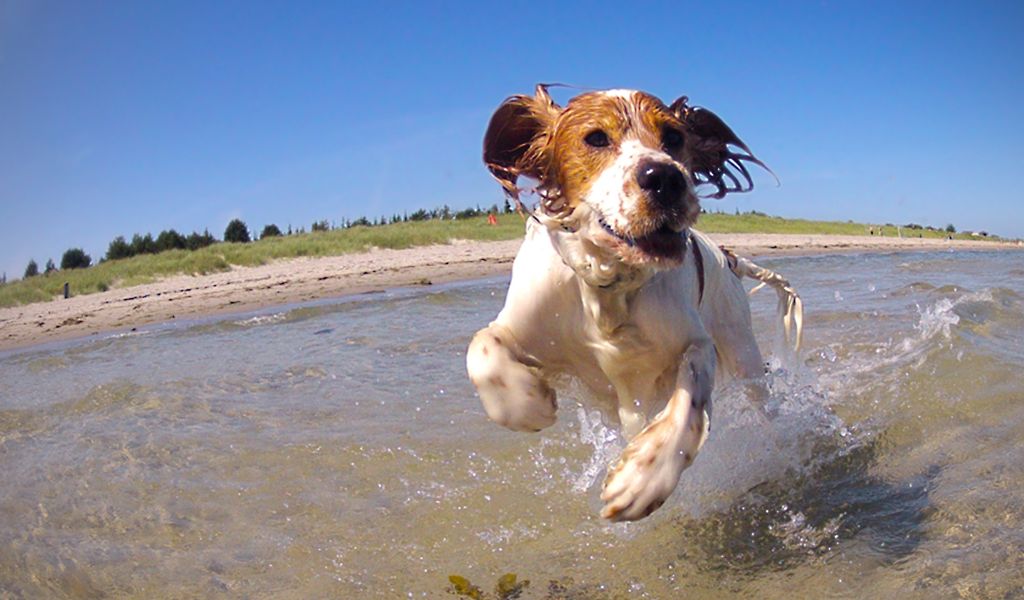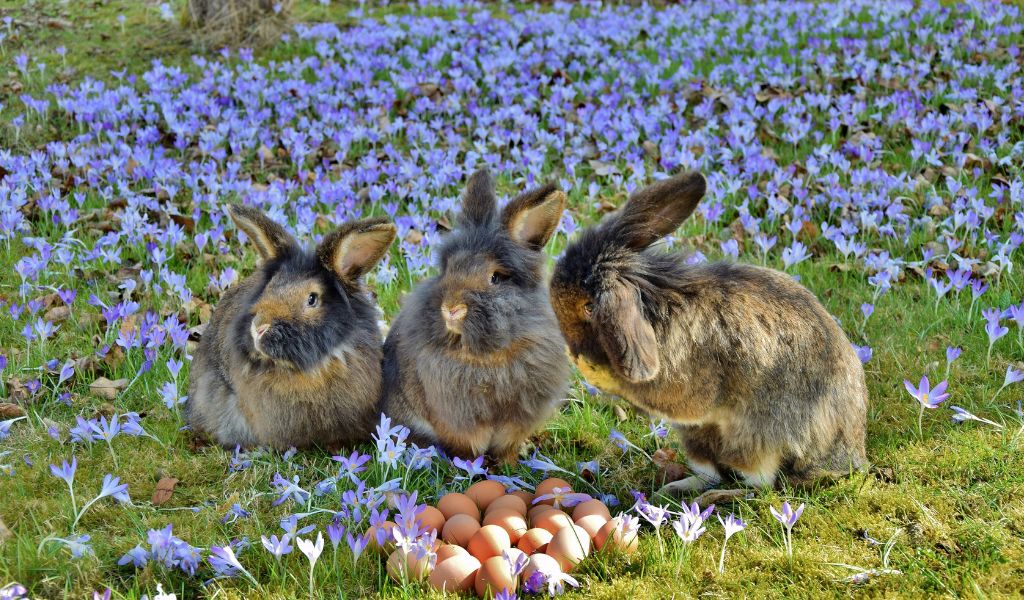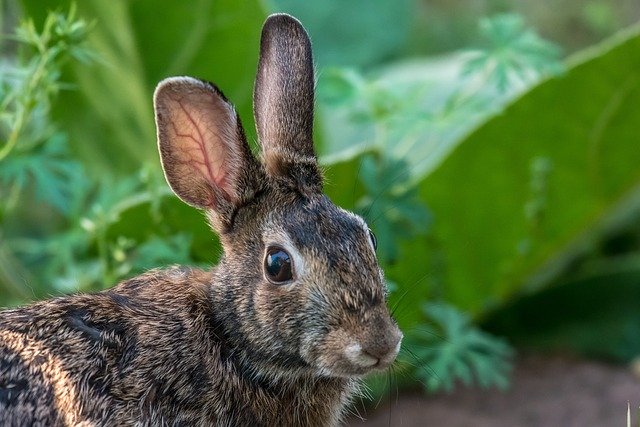Cocker spaniels are dogs that were originally bred to hunt game and their instincts, whether working or non working dogs, are to find game, flush it and fetch it back.
The very act of finding game in the first place for a spaniel involves a form of chasing which sees the dog running, scenting and seeking out birds and ground game and, on finding them, making them run away.
The temptation for a dog that is highly skilled and driven to hunt to chase after game is high and it is understandable that many Cocker spaniels chase prey when they should stop and sit or hup. In our spaniel training however, chasing is not something that we want.
In this article I will look at some simple steps that you can take which will help you to stop your Cocker spaniel from chasing.
You need a steady dog that you can trust when out working and these tips will help you to achieve this.
It is perfectly normal for a Cocker spaniel to chase after game – the myth that spaniels should not chase is just that a myth. In fact at an early stage chasing in a controlled manner is something that we can use to our advantage to introduce a shy youngster to the world of hunting.
Chasing is not a bad thing in a young dog
A spaniel that is a little reluctant will soon have some fire in his belly when he has had a short chase or two.
However, we do not want a Cocker spaniel to chase game when he is older and in a shooting, working or competition environment and we want to stop our spaniel.
So, given that is a natural desire for a spaniel to want to chase birds and things like rabbits, how do we stop a Cocker spaniel from chasing game when he is going at full pelt hunting?
Trainer’s tips to stop a Cocker spaniel chasing
Go back to basics and make sure that your Cocker spaniel is steady to the stop whistle.
Practise and practise the stop and recall whistles until your spaniel is 100% rock steady with them.
Most chasing problems are caused by a breakdown in basic training. Don’t rush your spaniel’s training.
Give your Cocker spaniel as much controlled exposure as possible to other animals such as sheep, cows, ducks in the park, next door’s cat and even pigeons in the town square to develop and reinforce steadiness.

Basic training is where to start with steadiness
If you look at my article on basic training which you can find here, you will see that the very first item of training that we introduce to a spaniel is the sit command.
Getting a Cocker spaniel to sit down is covered in the article mentioned above, and you need to make sure that you cover this basic exercise so that your spaniel sits when you tell him to, every time.
The sit command is the beginning of steadiness training and unless you dog will sit then you’ll have little if any chance of stopping him when he finds game.
Within the basic training you will see that we progress from sit to sitting at a distance and remaining sat down or stay then onto the stop whistle which is our ultimate stage.
When you can stop your Cocker spaniel on the STOP whistle, you can move onto the next stage which is introducing him to game.
Don’t be tempted to hunt him in an area where he is likely to find game before you can stop him on the whistle or he will chase game and you will struggle to catch him.
If you have and he has chased then don’t worry.
Go back to the basics and make sure that he understands and is compliant with the various stages – sit, sit and stay, sitting at a distance and the stop whistle.
A few points on Cocker spaniels chasing
To reduce the chance and risk of your Cocker spaniel chasing game there are some things that you will need to work on and be confident doing:
The stop whistle is the most important area of spaniel training. You will need to work on this every time you train with your spaniel and will need to do this in a wide variety of settings and environments.
When you are out walking with your spaniel running free, blow the stop whistle. If he does not drop immediately then you need to get after him and drag him back to the spot where he should have stopped.
Make him sit down and blow the stop whistle at him. You need to do this consistently every time he ignores you.
If you cannot catch him then you must chase him down, making as much noise as possible to show that you are unhappy with him.
When you finally get him, drag him back and make him hup on the spot where he should have stopped.
If you absolutely cannot catch him then use the recall whistle to get him back. When he returns you must praise him for returning to the recall whistle and ignore his failure to stop to the stop whistle.
Dogs remember the last command so we praise him for returning – but try again quickly with the stop whistle and be ready to catch him.
It is really important that your spaniel stops to the whistle when you blow it. Not only is this vital in something like a field trial or test, it is also vital when out working for his own safety.
Developing steadiness to thrown dummies
If your Cocker spaniel will chase after a thrown dummy he will certainly chase after a nice furry rabbit or noisy pheasant and you’ll need to work on this aspect of steadiness before moving on to more exciting stuff.
Canvas dummies are good for this type of work and you can also get fur and feather versions such as these that I use from Amazon.
Sit your spaniel down, tell him to ‘hup’ or ‘sit’ and while facing him, throw the dummy.
If he gets up then quickly stop him and make him sit down.
Do not send him for the dummy until he is calm.
Like the other exercises you will need to work on this in different scenarios until you can have him running free when you can throw a dummy, whistle him to stop before sending him to retrieve.
If he does run in without stopping then get after him and, if you can catch him before he gets to the dummy, drag him back to where he should have sat down.
Getting your Cocker spaniel used to game
This is easier for some people than others.
If you have access to game that is in a pen or somewhere enclosed then you have an ideal area to walk your dog through while he is on a lead.
Whenever he encounters a bird or rabbit, tell him to ‘hup’ or ‘sit’ and blow the stop whistle. Let him watch the game run or fly away and, after a few moments continue with your walk.
If you don’t have easy access to game then you’ll need to be a little more creative.
Many parks have ducks and other fowl that often wanders free. Find one near to you and take your Cocker along.
Do the same as above, let him smell and see the birds and, whenever one moves off, make him sit down.
In this activity you are trying to get your spaniel to associate the act of sitting down and the sound of the stop whistle with the act of the game moving away.
It seems like a small step but it can work wonders particularly in an excitable dog, by keeping him on his lead you have control and can help him to understand what is needed.

How to stop a Cocker spaniel chasing birds
Most game birds such as pheasants are lazy and will run along the ground until forced to fly. Often this is when a spaniel is behind them and they cannot get away.
As a spaniel trainer you need your spaniel to find the birds and flush them without chasing.
You will need to take your Cocker to an area where you have a reasonable chance of finding birds.
Often the edges of shoots or surrounding ground can be good options and it may be possible for you to get permission to do some dog work for a keeper to help to keep the birds on the shoot by working the fringes on non shooting days.
Keep your dog close to you and work him really tightly, stop him frequently and call him up to you, don’t let him get too far ahead. With most spaniels you will notice when he picks a scent up, his tail will move more quickly and he will ‘go up several gears’.
When you see this get ready, he may be about to find game. As soon as he does and the bird moves, blow that stop whistle. If training has worked then he should stop straightaway, but be ready to get after him.
If he does stop then wonderful, if he doesn’t then take hold of him and take him back to the spot, sit him down and blow the stop whistle telling him to hup or sit – whichever command you use.
Again, practise, practise and practise. As soon as he flushes and stops, end the exercise and take him home. Always end when he gets it right to end on a positive note.
When he is steady to birds we take the ultimate spaniel steadiness test – rabbits.
Stopping a Cocker spaniel from chasing rabbits
Rabbits are the ultimate steadiness test for any hunting dog including Cocker spaniels and steadiness to these balls of bouncing fur is important when training a Cocker.
Access to rabbits can be tricky in some areas while others are almost overrun, but in many cases there is no guarantee that your dog will find a rabbit when you are working him.
An ideal option is to find a trainer or kennels that has their own rabbit pen. Often they will allow you to use the pen, for a small fee of course, where you can work your Cocker.
You need to take the same precautions as with birds, keep your dog close and watch him carefully.
In many pens you will be able to see the rabbits so you can anticipate and get ready for your spaniel finding the rabbit.
Blow the stop whistle as soon as he finds the rabbit and, if he breaks to chase, run him down and drag him back to the spot where he should have dropped.
This is one advantage of a rabbit pen – your spaniel cannot escape so you will be able to catch him.
Continue with the exercise and, after a few sessions, with an intelligent Cocker spaniel, the penny will drop.
FAQs
Why does my Cocker spaniel keep chasing things?
Cocker spaniels, like many dogs, have a natural instinct to chase. This can be triggered by fast-moving objects, small animals, or even people. This behaviour is often due to the dog’s predatory instinct, but it could also be due to boredom, lack of training, or high energy levels.
How can I train my Cocker spaniel to stop chasing?
Begin with obedience training, especially the commands “sit,” “stay,” and “come.” These can be used to interrupt and redirect your dog’s attention. Positive reinforcement is crucial – always reward good behaviour. For structured training, consider a long lead or a fenced area where you can safely practice.
Are there any distractions or tools that can help stop my Cocker spaniel from chasing?
Yes, using distractions such as toys, treats, or other activities can be effective in curbing chasing behaviour. Training tools like clickers, long leads, and harnesses can also be useful. Remember, the goal is to redirect your spaniel’s attention away from the chase and towards something more positive and rewarding.
Basic training, consistency and practise are the key ways to stop a Cocker spaniel from chasing.
Make training sessions interesting and do your best to get your spaniel used to and familiar with livestock and other forms of animals.
Don’t rush his progress and always be ready to slow down and re-visit basic training to develop and enhance his steadiness.




